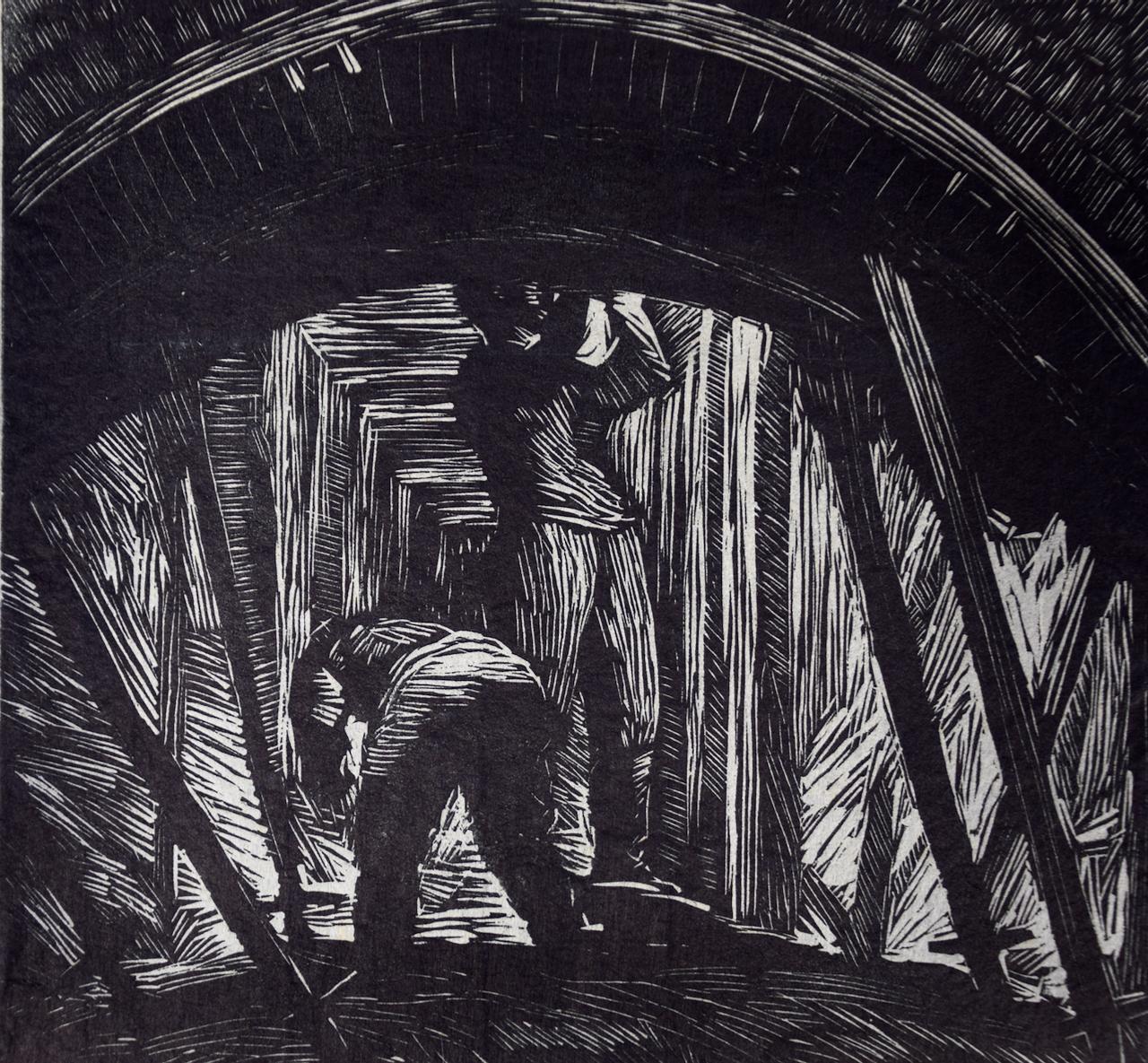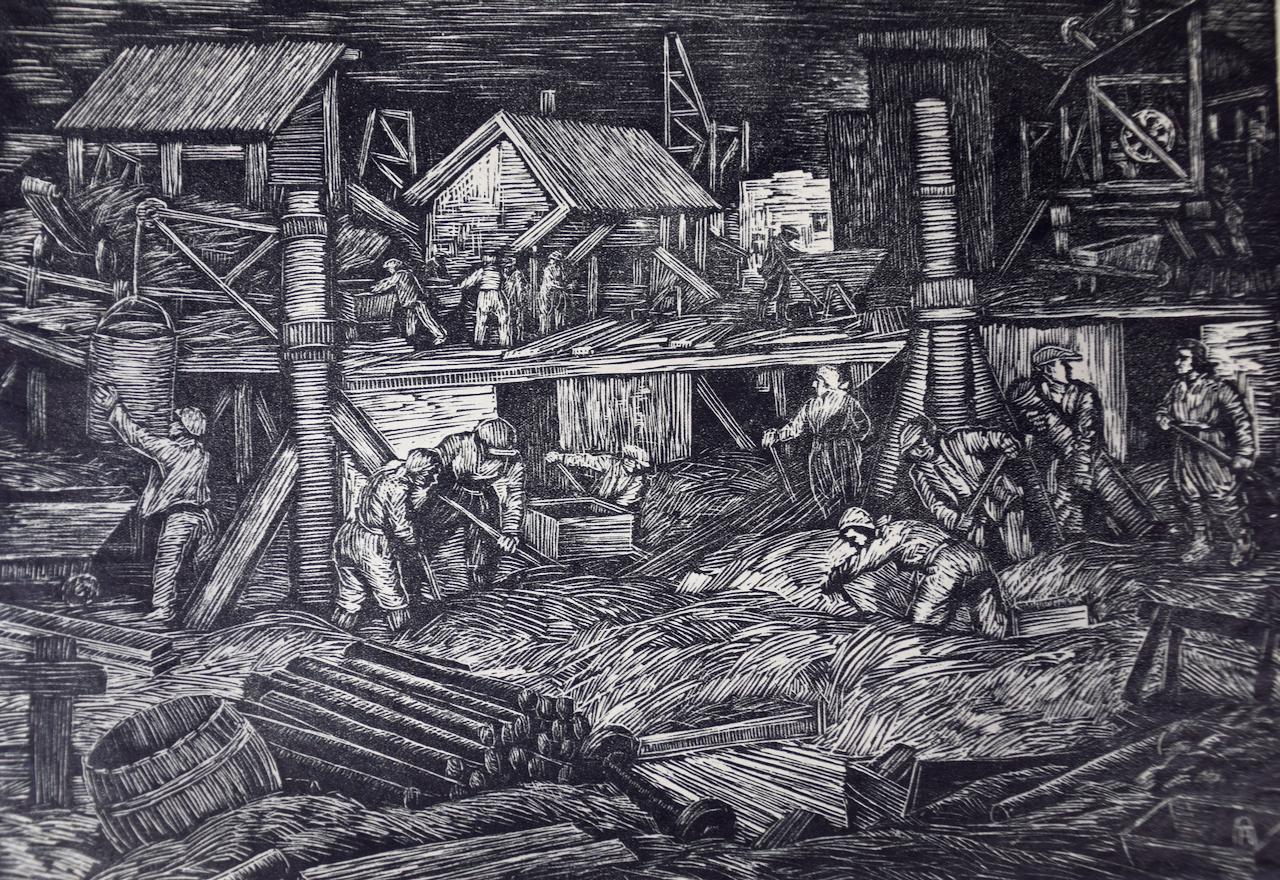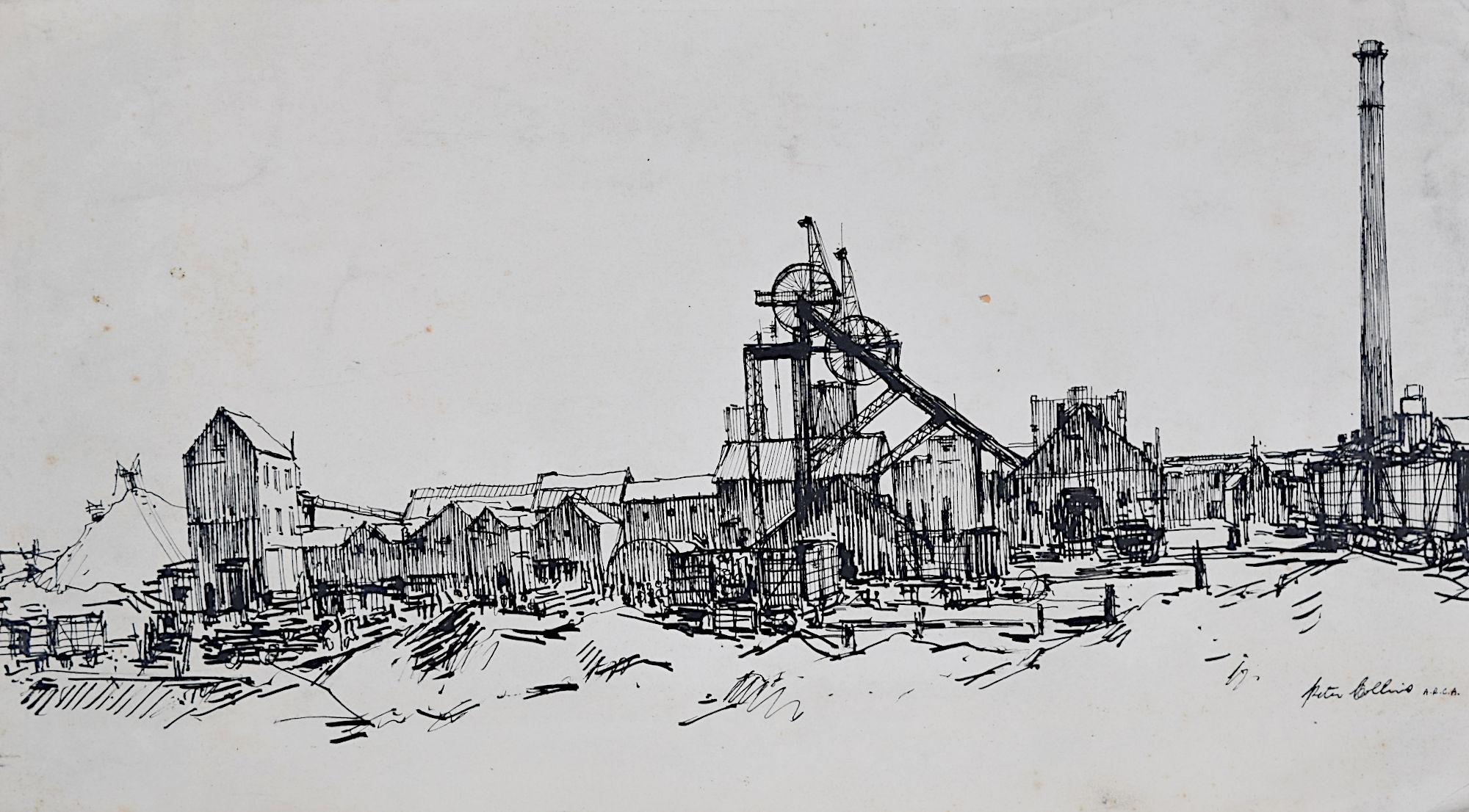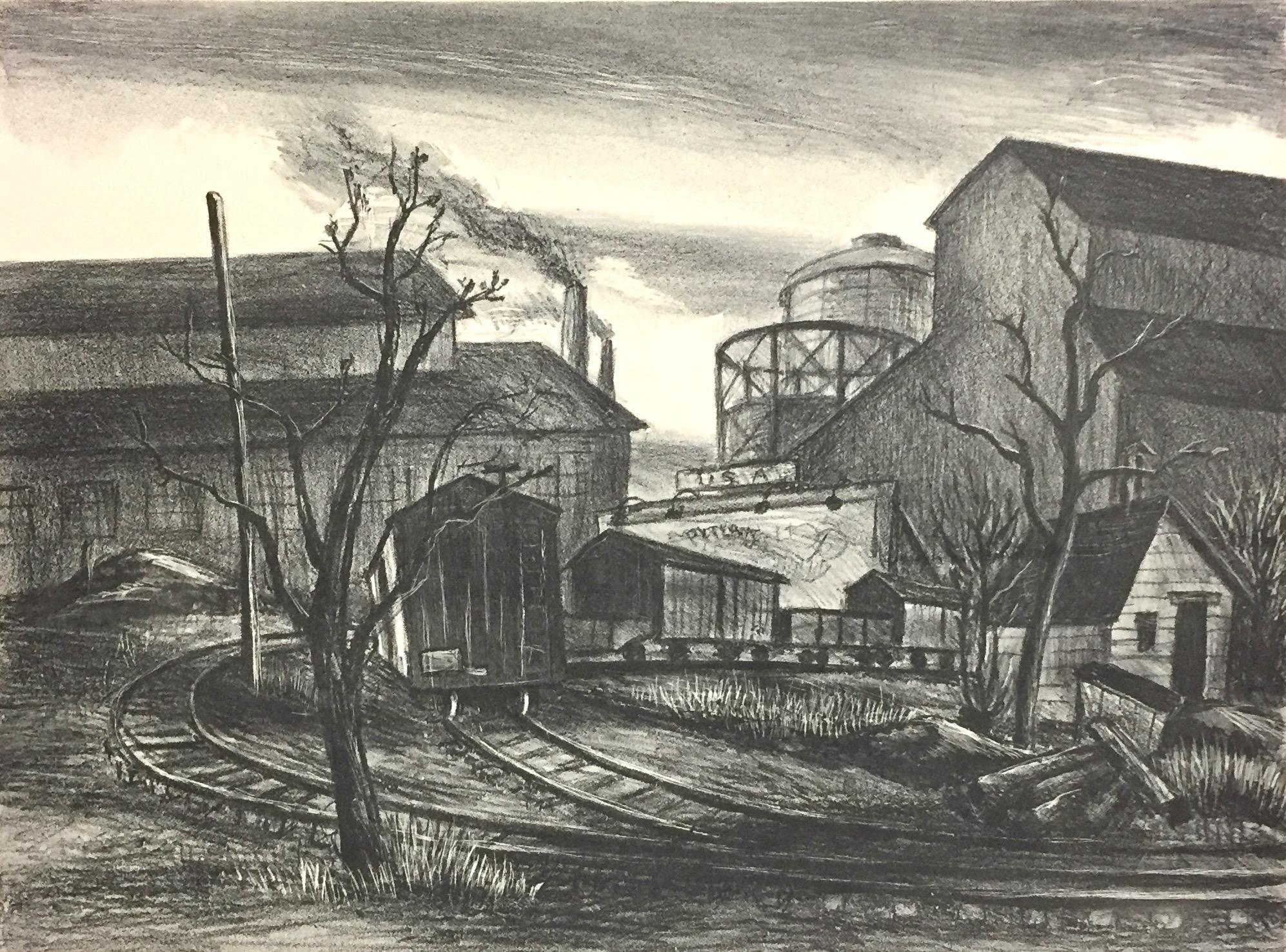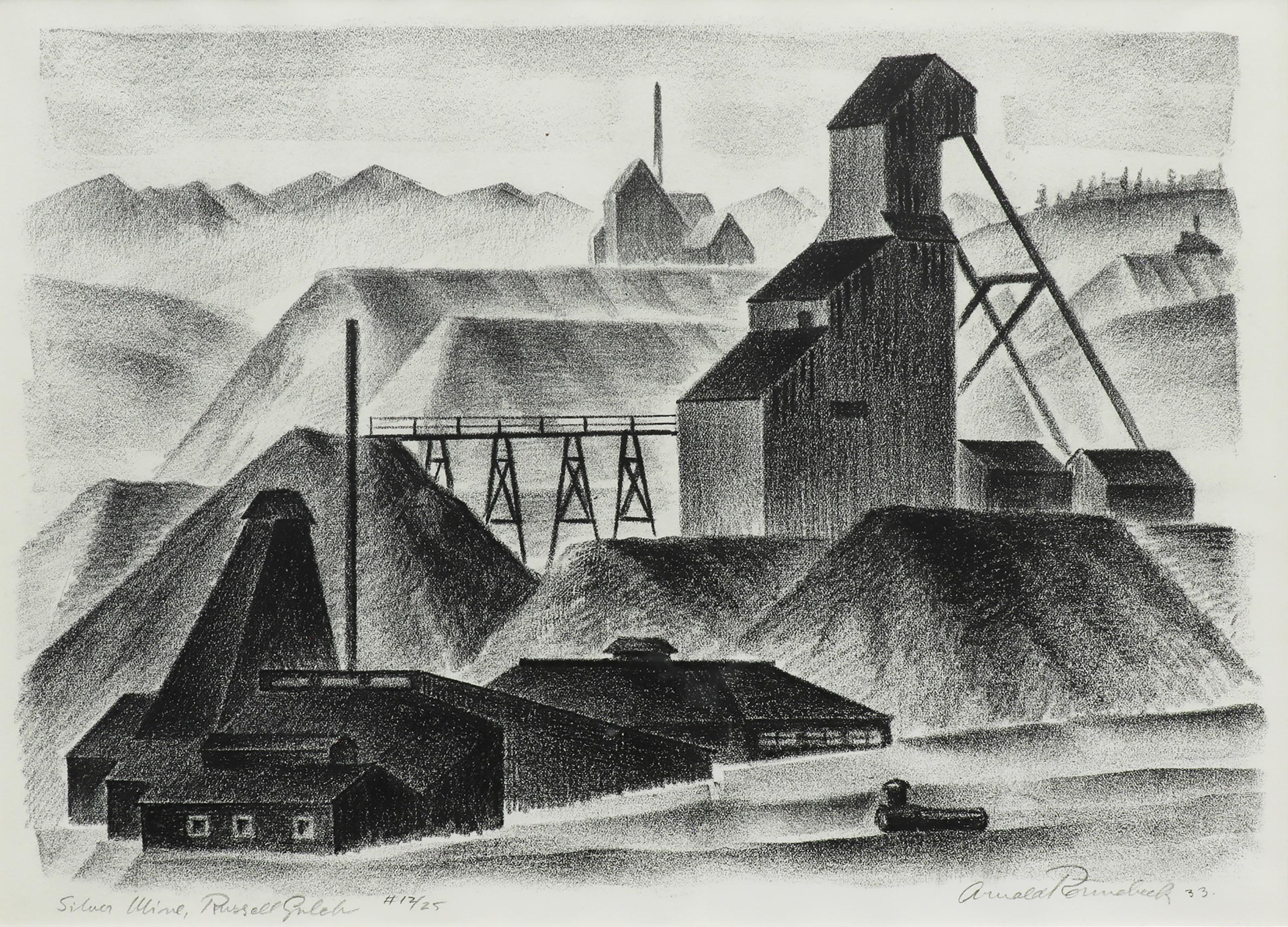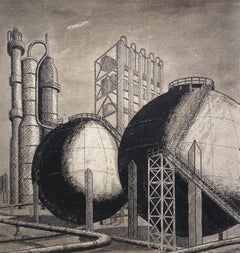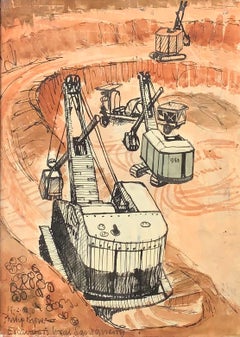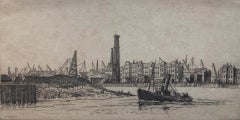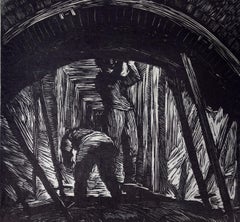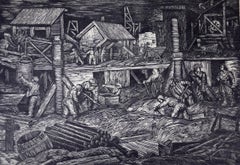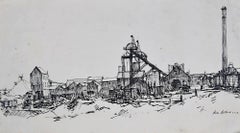Items Similar to Colliery Scene, Lancashire, 20th Century British Artist, Wood Engraving
Want more images or videos?
Request additional images or videos from the seller
1 of 3
David Kenneth MandellColliery Scene, Lancashire, 20th Century British Artist, Wood Engraving
$438.42
£320
€373.90
CA$610.37
A$667.65
CHF 349.06
MX$8,042.04
NOK 4,362.82
SEK 4,115.71
DKK 2,791.09
About the Item
Wood Engraving on paper, signed and entitled below artwork
Image size: 6 1/4 x 4 1/2 inches (16 x 11.5 cm)
Mounted and framed
This print depicts a scene of a colliery, that is of a coal mine and its structures, in Lancashire. The Lancashire coalfield was one of the most prolific in England and the number of shafts sunk to gain coal number in the several thousand. Coal mining continued to be a key factor for industrial development into the twentieth century, with the Lancashire Coalfield attaining a record output of some 26 million tons of coal in 1907, which was extracted from a total of 358 collieries. The demand for coal began to decline after the First World War, however, and the collieries on the Lancashire Coalfield struggled to remain economically viable in an increasingly competitive market. Despite significant financial investment after the Second World War, and nationalisation of the industry in 1947, the National Coal Board began to close collieries in the 1960s. Only 20 collieries remained open by the end of that decade, with the last working deep mine on the coalfield, Parkside Colliery in Newton-le-Willows, closing in 1993.
- Creator:David Kenneth Mandell (British)
- Dimensions:Height: 6.25 in (15.88 cm)Width: 4.5 in (11.43 cm)
- More Editions & Sizes:Edition UnknownPrice: $438
- Medium:
- Movement & Style:
- Period:
- Condition:
- Gallery Location:London, GB
- Reference Number:1stDibs: LU52414153182
About the Seller
5.0
Vetted Professional Seller
Every seller passes strict standards for authenticity and reliability
Established in 2007
1stDibs seller since 2014
84 sales on 1stDibs
Typical response time: 4 hours
- ShippingRetrieving quote...Shipping from: London, United Kingdom
- Return Policy
Authenticity Guarantee
In the unlikely event there’s an issue with an item’s authenticity, contact us within 1 year for a full refund. DetailsMoney-Back Guarantee
If your item is not as described, is damaged in transit, or does not arrive, contact us within 7 days for a full refund. Details24-Hour Cancellation
You have a 24-hour grace period in which to reconsider your purchase, with no questions asked.Vetted Professional Sellers
Our world-class sellers must adhere to strict standards for service and quality, maintaining the integrity of our listings.Price-Match Guarantee
If you find that a seller listed the same item for a lower price elsewhere, we’ll match it.Trusted Global Delivery
Our best-in-class carrier network provides specialized shipping options worldwide, including custom delivery.More From This Seller
View AllThe Works, Pen and Ink 20th Century Artwork, Female British Artist
Located in London, GB
Pen, ink and wash on paper
Image size: 8 1/2 x 9 1/2 inches (21.5 x 24 cm)
Mounted
Mary A Brooks
Mary A Brooks was a notable contributor to a vast array of children's publications from the early 1940s to the late 1980s. Brooks was the illustrator of Enid Blyton...
Category
20th Century Modern Landscape Drawings and Watercolors
Materials
Paper, Ink, Pen
Excavators at the Local Sand Quarry
Located in London, GB
Philip Byrne
20th Century
Excavators at the Local Sand Quarry
Ink on paper, signed, titled and dated bottom left
Image size: 11 1/2 x 8 1/4 inches (29.5 x 21 cm)
Hand made frame
Phi...
Category
Early 20th Century Post-War Figurative Drawings and Watercolors
Materials
Paper, Ink, Pen
Tug Boat on the Thames, Early 20th Century Etching Print, London Landscape
Located in London, GB
Etching on paper, signed bottom left
Image size: 9 x 4 3/4 inches (22.75 x 12 cm)
Framed
Category
1910s Landscape Prints
Materials
Paper, Etching
Founded on Sand, Gouache and Ink Artwork, British School Mid-20th Century
Located in London, GB
Gouache and ink on board, inscribed on reverse
Image size: 12 1/2 x 14 1/2 inches (31.75 x 37 cm)
Category
Mid-20th Century Modern Landscape Paintings
Materials
Ink, Gouache, Board
Worse for Wear. Pen and Ink Mid 20th Century
By Gordon Scott
Located in London, GB
Gordon Noel Scott A.R.C.A
1914 - 2016
Worse for Wear
Ink on Paper
Image size: 8 x 8 inches
White gold frame
GORDON SCOTT EXHIBITION AT DARNLEY FINE ART
11th - 18th November 2017
Gordon Scott was trained at the RCA (1934-38) under Gilbert Spencer...
Category
Mid-20th Century Figurative Drawings and Watercolors
Materials
Paper, Ink
The Watchers, Pen and Ink Drawing, 20th Century British School, Signed 1990
By Peter Gardner
Located in London, GB
Ink and ink on paper, signed and dated 19'90' bottom left
Image size: 7 1/2 x 6 1/2 inches (19 x 16.5 cm)
Mounted and framed
Peter Gardner
Peter Gardner was born in London in 1921...
Category
1990s Modern Figurative Drawings and Watercolors
Materials
Paper, Ink, Pen
You May Also Like
"Mine Shaft", Soviet Union: An Early 20th C. Woodcut Engraving by Abramovitz
By Albert Abramovitz
Located in Alamo, CA
This is a signed woodcut engraving entitled "Mine Shaft" created by Albert Abramovitz in 1935, after a trip to the Soviet Union. It depicts two Russian workers constructing a mine sh...
Category
1930s Landscape Prints
Materials
Woodcut
"Subway Construction, Moscow": An Early 20th C. Woodcut Engraving by Abramovitz
By Albert Abramovitz
Located in Alamo, CA
This is a signed woodcut engraving entitled "Subway Construction, Moscow" created by Albert Abramovitz in 1935, after a trip to the Soviet Union. It depicts many Russian workers acti...
Category
1930s Landscape Prints
Materials
Woodcut
Claude Muncaster Factory Scene UK aquatint print Modern British Art
By Claude Muncaster
Located in London, GB
We acquired a series of paintings from Claude Muncaster's studio and - unusually - this aquatint. To find more scroll down to "More from this Seller" and below it click on "See all f...
Category
Mid-20th Century Modern Landscape Drawings and Watercolors
Materials
Watercolor
Peter Collins ARCA Colliery Mining Scene pen and ink factory England sketch
By Peter Collins ARCA
Located in London, GB
To see our other Modern British Art, and our other Peter Collins, scroll down to "More from this Seller" and below it click on "See all from this Seller" - or send us a message if yo...
Category
1950s Modern Landscape Drawings and Watercolors
Materials
Ink
Leonard Pytlak, (Industrial Landscape, New York City)
By Leonard Pytlak
Located in New York, NY
This lithograph is signed and number in pencil. It is numbered 18/18 indicating there were 18 impressions of this subject printed.
Category
1930s Ashcan School Landscape Prints
Materials
Lithograph
Arnold Ronnebeck Lithograph "Silver Mine, Russell Gulch" Colorado Scene
By Arnold Rönnebeck
Located in Denver, CO
"Silver Mine, Russell Gulch (12/25)" is a striking black-and-white lithograph by German-born American Modernist Arnold Ronnebeck (1885–1947). This rare print depicts a historic minin...
Category
1930s American Modern Figurative Prints
Materials
Lithograph
More Ways To Browse
George Rouault Woodcut
Gerard Dou
Giacometti Annette
Giorgio Morandi Etching
Goupil Prints
Henry Moore Sculptural Ideas
Hermes Paris Rue Du Faubourg Saint Honore
Hockney Glasses
Hockney Olympic
Homage To Chagall
Howard Smith
Jane Bazinet
Jim Dine Pace Gallery 1980
Kaws Pink Bff
Kaws Signed Print
Kayla Mahaffey
Keith Haring 1991
Keith Haring Dog
